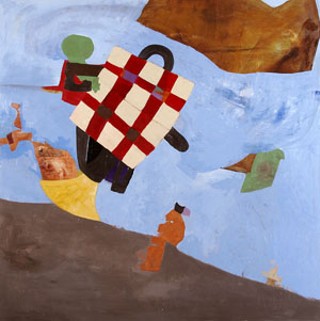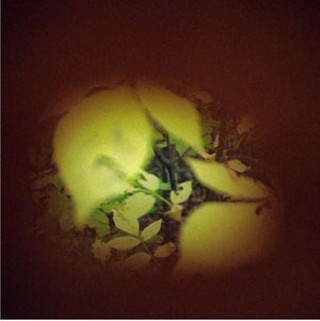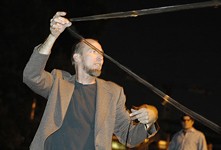Double Identity: Andrew Long & Michael Long
These brothers' works reveal the fascinating strengths of nonobjective art
Reviewed by Benné Rockett, Fri., Aug. 15, 2008

'Double Identity: Andrew Long & Michael Long'
Julia C. Butridge Gallery, Dougherty Arts Center, through Aug. 25
The works of Austin artist Andrew Long and his brother, Michael Long of Boulder, Colo., offer viewers endless opportunities to observe the fascinating strength of nonobjective paintings and photographs.
In creating his layered and exuberant abstract paintings, Andrew approaches the static panel supports as an expansive space for losing shape. Built-up layers of color are often scored with a Dremel or sander to reveal organic shapes while leaving marks with their own identities. Other areas of the painting are covered up, lending only a hint at what may lie beneath the surface. His style allows for intentional and spontaneous symbols to coexist, resulting in the randomness of an iPod in shuffle mode. The works suggest a comfortable arena for organic and figurative lines to commingle. Some of the works offer metaphorical landscapes of the artists' inner worlds, while others deal with the more technical ideas of balance and form. Regardless, the trend in these works is to rely on a well-seasoned instinct. Like Joan Miró, who lived in both the visual and theatrical worlds, Andrew Long's comfort within his own systems, either from dance or photography, leads the way in these current expressions. He has embraced all art forms as being worthy of his experiments. A drama arises from his embrace of a variety of art forms, thus creating a dynamic tension between painterly elements and the more figurative sequences.

Michael offers a magnified and provocatively rendered image of nature's secrets through his photographs. This kind of enhanced awareness of organic structure offers physicality beyond a casual glance. His understanding of the temporary state of the natural world lends itself to spontaneity and manipulation. Designing in soft focus and using shapes to continue the photograph beyond the physical frame are two techniques used by Michael to delay the viewers' recognition of the original. Form and forces upon the form seem to have established equilibrium. In these studies of the internal structure of nature images, the indirect experience of reflective surfaces, or light running along the edge of a stem, becomes a secondary characteristic. Wholly new objects, with little reference, exist with bold intention in these photographs.
All aspects of abstract art become means of making discoveries about the viewers' visions of the world. Nonobjective art makes it more possible to be purposefully unintentional. Both bodies of works align themselves with an ever-changing physical and psychological world.










